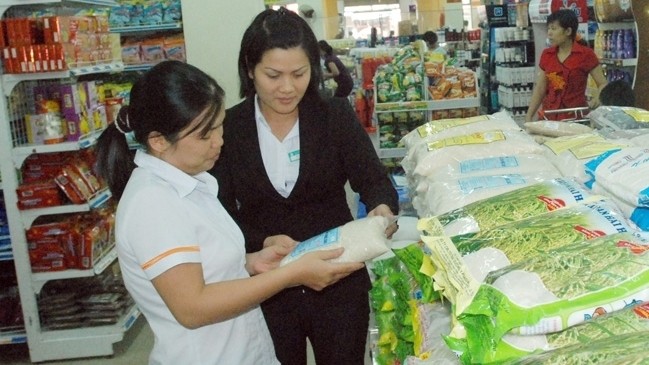In recent years, along with the rapid growth of supermarkets and convenience stores in Vietnam, the volume of Vietnamese goods in domestic supermarkets has always accounted for over 90%. For traditional retail channels, the proportion of Vietnamese goods at markets and stores is at least 60%. Even in supermarkets with foreign capital, Vietnamese goods are also dominating, specifically, Lotte (82% in revenue and 84% in quantity), Big C (96% in revenue), AEON (80% in product code), MegaMarket (95% in product code).
The campaign has created a positive impact on the whole of society, helping consumers and agencies, units and organisations be better aware of their responsibilities and rights in using domestic products. According to the Ministry of Industry and Trade, this is an important factor to help the total retail and service flow of goods since 2009. It has continuously increased by about 10% per year, especially in the last three years, this increase continuously established new records of 10.2%, 10.9%, and 11.7%, respectively.
On the other hand, this is also the motivation for domestic industrial production to grow positively with an enhancing localisation rate. Accordingly, the growth rate of industrial production over the past years has increased significantly (2018: 10.2%; 2017: 9.4%; 2016: 7.5%; 2015: 9, 8%). In addition, some key industries such as garment-textile, footwear, automobile manufacturing, milk processing, yarn and dyeing have increased the rate of localisation and volume of science-technology in products.
The domestic business community has also built a sense of constantly improving and applying science and technology, renewing the process of production and management to create quality products. It can be seen that many domestic goods products have truly conquered consumers, many of which have become the pride of Vietnamese people.
The practical results from the campaign as well as the growth of the manufacturing and service industries have contributed significantly to curb inflation and stabilise the macro economy. Consumer price index (CPI) from the inflation rate of 19.8% in 2008 has dropped to below 5% in recent years. Particularly, the country has shifted from a trade deficit to a trade surplus. In 2010, Vietnam's trade deficit was US$12.5 billion, but by 2018, Vietnam recorded a trade surplus of nearly US$7.2 billion.
Obviously, the campaign has affirmed the intended direction of the Party and State, which has great significance in many aspects. It has upheld the national pride and self-esteem in every Vietnamese person, enhanced the responsibilities of branches and sectors, contributed to building a self-reliant economy as well as promoting the national strength to help Vietnamese enterprises stand firm and overcome difficulties in the integration trend. This is also considered an important premise for the campaign to continue to be effectively implemented in the coming time, especially in the context of the country’s deeper integration and the expansion of the international market.
However, besides the advantages, Vietnamese enterprises will also face pressure from having to comply with commitments in free trade agreements that Vietnam has joined as well as opening and cutting down tariff lines according to the roadmap of the FTAs. In addition, competitive pressure in the domestic market with imported goods as well as the production of FDI enterprises is very fierce. Some Vietnamese products are not competitive enough in quality, design, packaging, after-sales service, etc. More seriously, trade fraud and counterfeit goods have been getting more complicated, causing a negative impact on the Vietnamese brand.
In order to further promote the campaign in the coming time, it is necessary to strengthen communication to raise awareness and responsibilities of producers and consumers for the production and use of Vietnamese goods, as well as strengthening coordination among ministries, sectors and localities for domestic market development. More effective measures should also be devised to increase the value of Vietnamese brands to make inroads into international markets.
















